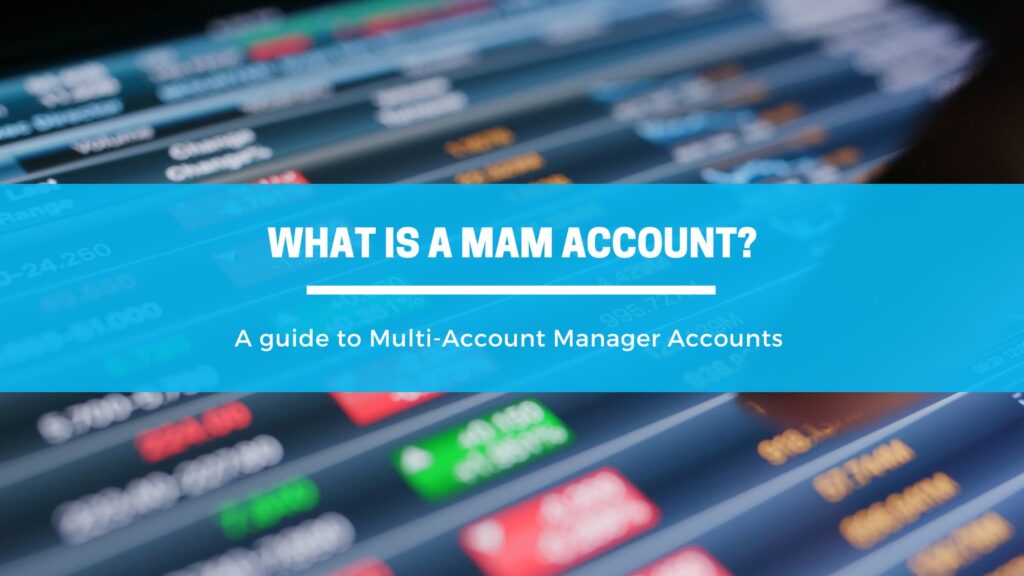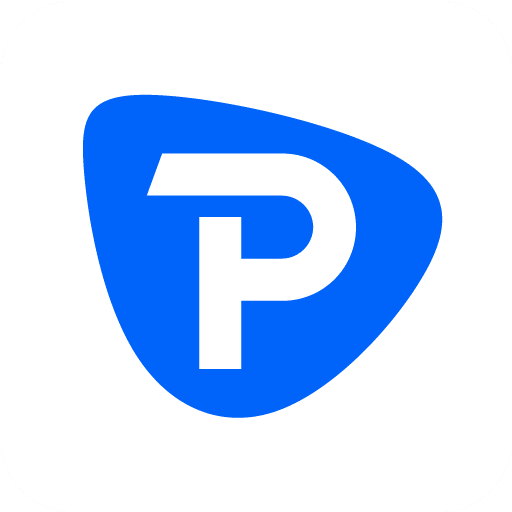Financial markets are complicated, and although investing may be a terrific way to enhance your wealth, understanding how these work can be difficult for the average investor.
Thus, having a professional money manager take care of your assets on your behalf is an excellent approach to streamlining the investing process for those new to the market.
This is where a MAM account comes in.
This article will provide a complete guide on what a MAM account is, how it works, and its advantages and disadvantages.
MAM Accounts: At a Glance
| Feature | MAM Account | Standard Account | Micro Account |
| Account Manager | Professional | Self-managed | Self-managed |
| Minimum Deposit | High | Moderate to High | Low |
| Leverage | Customizable | Fixed | Fixed |
| Trade Sizes | Customizable | Fixed | Fixed |
| Fee | Performance-based & management fees | Spread markups & commissions | Spread markups & commissions |
| Number of Accounts Managed | Multiple | Single | Single |
| Account Customization | Available | Limited | Limited |
MAM is an abbreviation for “multi-account manager.” As the name suggests, this account will let a trader manage multiple trading accounts from one master account.
This is unlike a PAMM account, which lacks prorated profit-sharing.
Other traders incorporated with a MAM account can also see all the orders being executed from the parent account. This also applies to leverage applied, lots traded, and other variables. Additionally, this type of account also allows a trader to earn a bonus on profits and a performance fee.
Benefits of a Customizable MAM Account
| Pros | Cons |
| Diversification across accounts | Complexity in managing multiple accounts |
| Efficient trade execution | Limited customization options for clients |
| Scalability for growing AUM | Limited access to certain markets |
| Simultaneous management of multiple accounts | Risk of account mismanagement by money manager |
| Reduced trading costs through volume discounts | It may require a higher minimum investment |
- Customizable: MAM accounts provide choices for trade sizes and leverage that may assist satisfy the demands of a wide range of customers.
- Professional Insights: Managed Accounts Module (MAM) accounts allow customers to delegate investment decision-making to professional money managers, relieving them of the burden of monitoring their account.
- Account allocation: This allows money managers to quickly and easily execute trades on behalf of various clients with diverse investment amounts.
- Reduced fees: Since money managers can trade on behalf of many people from a single account, costs may be lowered as a result of economies of scale.
- Transparency: Access to transactions, balances, and performance indicators in real time is a major benefit of MAM accounts, as it fosters a culture of trust and responsibility between money managers and their customers.
- Risk Management: Multi-Account Management (MAM) accounts may provide enhanced risk management for customers by enabling money managers to spread investment risk across numerous client accounts.
Picking a MAM Account: What to Look For?
While deciding between MAM brokers and accounts, it's crucial to take a number of aspects into consideration. Here are some crucial things to check for:
- Regulation: Be sure the MAM broker you pick is supervised by a reliable financial regulator. This way, you can be confident that the broker is acting in a legal and ethical manner.
- Broker Reputation: Before signing up with a broker, be sure to research their standing in the current market. Look into their reviews and ratings from traders and financial managers when deciding which broker to choose.
- Platform: Choose a MAM broker that offers trading on a platform that meets your needs in terms of ease of use, reliability, and productivity.
- Account types: Look for a broker that can meet your demands by providing a range of account sizes, from normal to mini to micro.
- Fees: Try to find a broker that charges reasonable rates for excellent service. It is a good ROI that will get you results ultimately!
- Minimum Deposit Requirement: Think about the very minimum that your prospective broker would want as a down payment for a managed account for M&A (MAM) trading. It's important that the required deposit is both manageable and affordable.
- Trading Conditions: Evaluate the leverage, spread, and commission provided by various MAM brokers. It's important to work with a broker that provides you with the best possible trading circumstances.
- Customer Support: Go for a MAM broker that provides first-rate support services, such as quick response times, thorough knowledge bases, and a variety of contact options.
- Educational resources: Whether you are a veteran or a new trader, you can always benefit with educational guides, videos and newsletters. See if your broker gives access to trading courses and other learning materials.
By carefully considering these factors, you can compare MAM brokers and accounts to find the one that best fits your needs as a money manager.
Creating a MAM Account: Step-by-Step Guide
Here is a detailed tutorial on how to register for a MAM account:
- Research About Your Target MAM Broker: Compare their services, costs, trading conditions, and regulations with other renowned MAM brokers.
- Choose a MAM Broker: Choose the best MAM broker for your situation and financial goals.
- Open an Account: After deciding on a MAM broker, you can visit their website and start the account opening procedure by clicking the “Open an Account” option.
- Fill Out Your Application: Include your name, address, phone number, email address, and trading history on the MAM account application form. Further identification and verification of residency may also be requested from you.
- Adding Funds Into Your Account: As soon as your MAM account is verified, you should deposit the minimum amount required by your broker. Credit/debit cards, bank wire transfers, and internet payment systems are some of the common ways to do this. When you've added funds to your MAM account, you may begin adding customer accounts. In order for your customers to access their accounts and monitor their investments, you will need to provide them login information.
- Constructing Trade Limits & Parameters: Adjust your MAM account's settings to suit your trading style, including transaction size, leverage, and risk management. You'll be able to handle customer accounts more effectively if you do this.
- Manage Your MAM Account: Managing client accounts and making transactions on their behalf is a breeze once you have a MAM account set up. Keep an eye on your MAM account's stats and fine-tune your trading approach as you go along.
Trade Execution with a MAM Account
Using a server, orders placed in a master account are routed to secondary accounts, enabling multi-account trading. There are several stages in the transaction execution process.
When a money manager makes an order on the MAM platform, it is sent to the broker's server.
The broker's computer will then divide up the transaction into smaller sub-accounts depending on the allocation factors the money manager has established, such as deal size and risk.
The broker's server compiles bid/ask quotes from different liquidity providers and presents the client with the best possible price for the trade.
When an order comes into the broker's system, the server will fill it at the best available price, taking into consideration any slippage or price deviation from the quoted price.
When a transaction has been performed, the broker's server sends a confirmation message to the money manager and any sub-accounts. This message will include the deal's specifics, including the amount traded, the trade size, and the time of execution.
Final step is settlement, in which the broker's server settles everything by exchanging the necessary currencies and updating the master and subsidiary accounts.
Types of Orders Available
- Market Orders: A market order is an order to buy or sell a currency pair at the current market price. Market orders are executed immediately at the best available price, which may be different from the quoted price due to slippage.
- Limit Orders: A limit order is an order to buy or sell a currency pair at a specified price or better. If the market reaches the specified price, the order is executed at that price or better.
- Stop Orders: A stop order is an order to buy or sell a currency pair at a specified price or worse. If the market reaches the specified price, the order is executed at the best available price.
- Stop-Limit Orders: A stop-limit order is a combination of a stop order and a limit order. The order is executed as a limit order at a specified price or better, but only after the market reaches the stop price.
- Trailing Stop Orders: A trailing stop order is a dynamic stop order that follows the market price at a specified distance. The stop price is adjusted as the market moves in the direction of the trade, allowing for a larger profit while limiting the downside risk.
- One-Cancels-the-Other Orders: A one-cancels-the-other order (OCO) is a combination of two orders, where the execution of one order automatically cancels the other order. For example, a money manager can set a limit order to take profit and a stop order to limit losses, and the execution of one order will cancel the other order.
Conclusion
In conclusion, a Multi-Account Manager (MAM) account is a type of investment account that is designed specifically for professional money managers to handle multiple client accounts from a single master account.
It offers many benefits, including customization, professional management, efficient account allocation, reduced fees, transparency, and risk management.
However, it's important to carefully consider several factors when comparing MAM brokers and accounts. By following a step-by-step guide to open a MAM account, you can start managing your clients' investments with ease and efficiency. Overall, MAM accounts can be a powerful tool for money managers looking to simplify their investment process and grow their clients' wealth.




